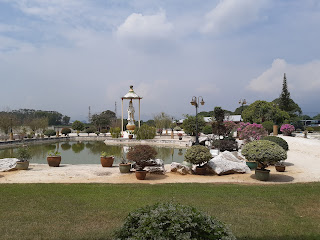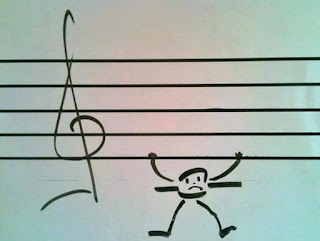"She's the size of a kettle when I took her home", was the description given by my late grandmother.
This is the story of my mom. A note solely to commemorate the person whose voice was the first I heard in my life. Also as a means to keep memories alive.
And if any of my children come across this blog one day, then this is the story of their maternal grandmother who had looked forward to meet her grandchildren for the longest of time, but never had the chance to do so due to fate.
The Birth
Born in the rainy and serene town of Taiping, Perak on 22nd March 1948, my mom was accordingly a skinny baby, who was given away for adoption before her first month of life, or "full moon", as what the Chinese would call it.
Hometown of Taiping
Quoting my late grandma:
Her biological dad's surname is "Liu" (劉 / 刘) of Hakka (大埔) descent while her mom had passed away long ago (at the time of narration, when I was 16 years old). She's not the only one given out for adoption, but a few sisters as well.
During her mom's pregnancy, one of the local Malay ladies had initially made her "booking" to adopt her. However, for unknown reasons, the lady could not be located after more than a week, and her parents were financially struggling to make ends meet. You know, the aftermath of WW2 in the years before had ruined many people's livelihood.
The Adoption
My maternal grandpa and grandma (who legally adopted my mom) were married for a number of years in the 1940s. However, they did not have children of their own. Upon recommendation by my grandma's aunt, through words of acquaintances, it was how both pairs of my grandparents met.
Toddler photo
Growing up and Aspiration
Back in those days when hygiene and infant vaccination were almost non-existence, my mom was a frail child.
For instance, pertussis was described as the "100 days of cough". She'd coughed so badly for so long, that my grandparents thought she would not make it. My grandma would further narrate how she used to carry my mom when she was a child to the clinic, because she was frequently sick.
Although my grandpa read the Nanyang (Chinese) newspaper daily, he looked up to the western cultures, and as a result, sent my mom and my aunt (8 years younger that my mom, also adopted during infancy) to an English school.
My grandpa's view was that, hopefully both of them would be able to secure a job in the civil service.
My mom was not academically-inclined, but was more drawn towards sports and extra-curricular activities. Girls' Life Brigade, 100 m and 200 m runs were her activities in school.
During her school days, my mom had great admiration towards uniforms. Her main childhood ambition was to become a policewoman.
Upon finishing school and while trying to apply for jobs, she was told "bagus amoi, tapi you pakai spek... jadi tak boleh masuk polis" by one of the policemen at the station where she went (it meant - good, but since you wear glasses, you don't qualify to become a police).
My mom admitted that it was difficult looking for a job back then. Finally, lady luck came and my mom was offered to pursue Midwifery in the government nursing school.
Where She Worked
From Taiping to Jitra in Kedah, she had served in a few other small towns, even remote areas in Perak e.g. Gerik, Klian Intan, Batu Hampar and Beruas as a midwife, later as Jururawat Desa, and Jururawat Masyarakat (community nurse), between the 1960s to the late 1970s. Those days when home delivery was still common in places located quite away from the hospital, where folks used to engage a public midwife to deliver their babies.
Jetty at Batu Hampar
"Guess that's why I met my Mr. Right late....", my mom would tell me.
Later on in her 30s, my mom was transferred to Klinik Kesihatan Kg. Manjoi in Ipoh. And soon, upon meetings via mutual friends, that was how my mom met my dad for the first time. My dad had worked for a number of years in Cameron Highlands prior to that, before he returned to Ipoh.
From Manjoi, my parents got married (my dad being 39 at that time, and my mom being 34), and had their first child the following year (me).
The same year in 1983, my mom received another transfer to Kg. Sungai Terap in Batu Gajah (BG is 20 minutes away by car from Ipoh), and lastly to Kg. Baru Bemban in the same town in 1989. My mom's workplace thus explains why I went to both St. Joseph Kindergarten and St. Bernadette's Convent in BG, instead of within Ipoh itself.
KK Kg. Manjoi, Ipoh (1983)
My mom loved her job and treated her patients like her friends. However, despite her passion as a nurse-midwife, my mom somehow did not encourage me to pursue a path similar to hers.
Deep side, I had a secret ambition of becoming a staff nurse. Gotcha... it's only now I am disclosing it.
But since my mom always told me to seek something purportedly "better", by bluntly telling me "a nurse's job is about serving people all the time, sometimes you even get treated like a coolie...", I therefore did not proceed with my secret plan to apply for any nursing training.
The Loves of Her Life
My parents have 2 children from their marriage. A pair comprising a girl and a boy.
Observing the demeanor of my parents as a child, I used to think that my parents, notably my mom, indulged my younger a little more. I think I only got closer to my mom from my teenage onwards, a time when there were so many questions about life to ask a mom.
Post-Work Life & Numbers Don't Lie
My mom retired in 2004 at the compulsory retirement age of 56 at that time. I figure that it would be challenging to both my parents, in the sense that their children were still young and studying, while both of them were retired. An age where a number of their peers were either about to become grandparents, or already one.
Being an active person and in frequent contact with her peers and ex-patients, my mom had remained largely at work with small businesses, ranging from selling clothes (those days when catalogues were quite common), bed sheets, and formula milk, which included infant formula.
During her free time at home, other than helping my dad out, she enjoyed gardening and tending to my brother's pet dogs.
Post-retirement hobby
Despite the active lifestyle and healthy appearance, my mom was actually not 100% in the pink of health, as she used to suffer from thyroid problems in her youth, and subsequently one of the common NCDs which affect a number of elderly folks. But everything seemed in control, as figures don't lie, do they?
The Last Mother's Day
I wish I could have given her much more, but alas, being still "young" in the career path means I could only afford humble treats for her, after years of her feeding me as a child.
May 1st was a public holiday, I went back to Ipoh by sheer homesickness, and thought of celebrating Mother's Day in advance. Took her to Kinta City (arguably the biggest shopping mall back then), had lunch, and went shopping for a pair of new shoes and handbag, as she had planned to use them during my wedding that very same year, voila!
"Why would you not prefer me to marry the following year instead, so that I will be more prepared?", I jokingly said to her.
"Look, I am getting old, I am not perfectly healthy, and who knows if I would be dead by then?", she replied in a very spontaneous and chill manner.
"But you are even more energetic than me... unlike me who's always tired at this young age", I said.
I couldn't churn out the logic of celebrating Mother's Day so early, and also especially when I am not the sentimental type who would commemorate any special days. But, I felt a strong urge of doing it, as if I would say good bye to her after this (being married away from my family...).
Farewell, from the Bottom of My Heart
On the day my own wee baby Alvin was born in May 2012, was the 1st year anniversary of my mom's demise.
The way Alvin came, was also coincidentally similar to the way my mom left. ICU setting, intubation, blood transfusion, brain scan, various lines into the veins, looking so frail, etc. God surely had very strange plans in our lives.
The sandy garden outside her final resting place in Bercham, Ipoh
On that fateful afternoon, just a week after our last Mother's Day together, my mom fell unconscious and had her head hit near the dining area. She was sent to the general hospital (Ipoh) by ambulance... the fastest and safest way to get there.
The doctors at the A&E took quite some time to figure out what was wrong with my mom, and which ward to place her. That night, a policeman came by my home (in Ipoh) with a written message, my brother took it, and apparently, the doctor was seeking a next-of-kin to consent to a blood transfusion. We were further confused by what had transpired.
To cut the story short, unknown to all of us, my mom had brain aneurysm. She had lived for 7 days in the ward without being able to speak to anyone of us, before taking the last breathe due to ICB (intra cranial bleed).
It just reminds me of how fragile can a human be. Appearing so energetic and well one day, and motionless the next day.
My last words to my mom, if I could have turned that clock to that day?
Thank you for being my mom and the memories of our times together. I am not a perfect child, but I know you have done all your best in parenting and showering your love. Farewell, from the bottom of my heart.
#Mom
#SekLaiKuin
#IreneSek






















